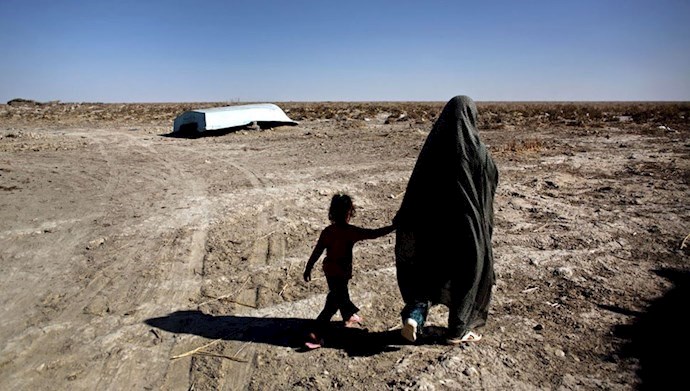Reporting by PMOI/MEK
Iran, September 19, 2020—Poverty and deprivation in Sistan and Baluchestan province, southeast Iran, and its underdevelopment have left the people of this province facing exhausting difficulties economically and socially.
Inequality is on the rise in the province while it has the capacity to lift the people out of poverty.
However, the suppressive mullahs’ regime has not used these capacities for the good of the people, but to loot and plunder, including the use of a strategic port in the city of Chabahar.
Poverty in this province is so rampant that some locals have taken refuge in neighboring Kerman province in the west, which itself is already one of the poorest areas of the country.
The Baluch people in south of Kerman province live in tents, have no electricity at night, and have to procure their own water in the scorching summer heat.
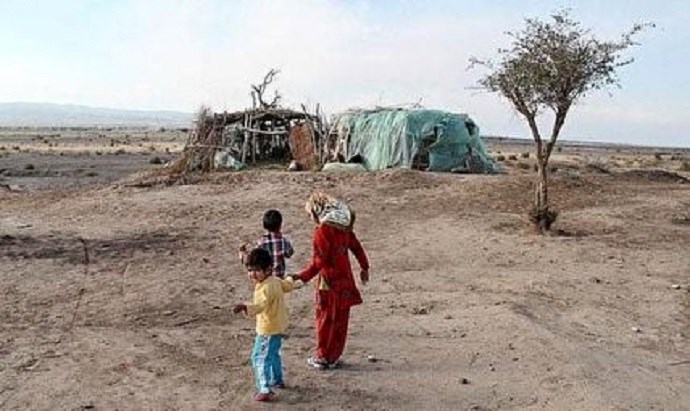
Many of people live in tents in Sistan & Baluchistan province, southeast Iran
This is the share of the deprived Baluch people and their children from Iran’s God-given wealth. The sole means of recreation for their children are handmade dolls.
The precious childhood years of these little ones are spent in a deserted, waterless, high-temperature area.
“At the very beginning of the first 20 years of the 21st century, imagining the nineteenth century may be difficult and intangible and it is also unfamiliar to embody and express the biography of the people of that far period,” a September 1 report wired by the state-run Etemad Online website reads in part. It may be hard to believe for a person who lives in this century, but this article explicitly describes the situation of children in Iran’s Sistan and Baluchestan province.
A barefoot, stressed, yellow faced child with a mended and torn garment on all sides. The child is wandering around in ruins, picking up a piece of bread and eating it where garbage is piled up.
When some of these children go to fetch water from seasonal ponds, they get killed by marsh crocodiles or lose their hands or legs.
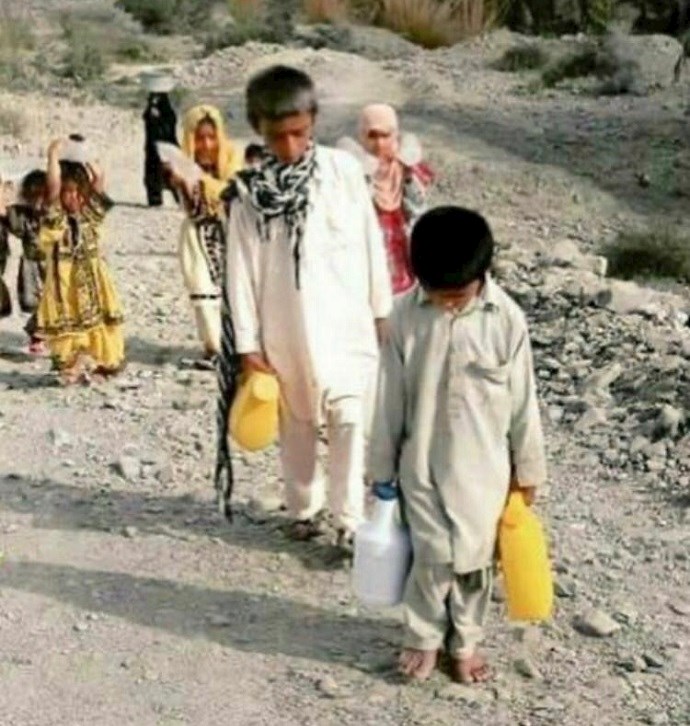
Barefoot children in Sistan & Baluchistan province, southeast Iran, are seen fetching water instead of playing or studying
But there is no place in this region where people are free of round the clock concerns about providing water.
This is due to the regime’s refusal to provide the necessary infrastructure in this region.
In a video posted on social media children are seen running, but not to play. Instead they try to reach a tanker to fetch water for their house.
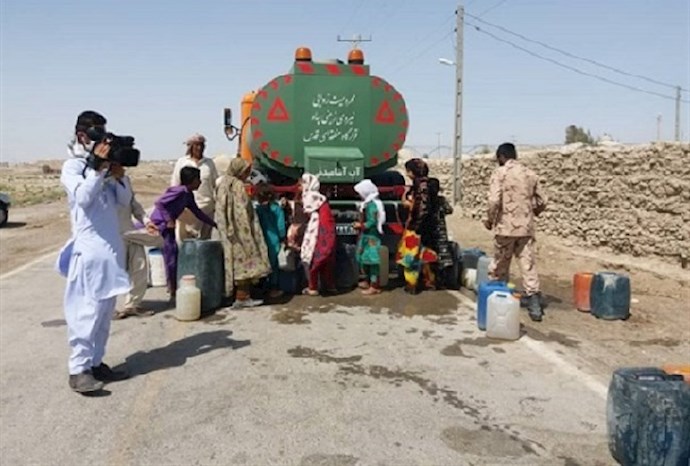
People fetch water for their homes in Sistan & Baluchistan province, southeast Iran
“We have no comfort. What is this life we have? We have lived without water for 17 years and we live in misery and oppression,” the elders say.
All the locals complain about their area’s underdevelopment, dehydration, malnutrition, and lack of cooling facilities during the summer heat. If these people talk to anyone, they have just one thing to say: dissatisfaction over discrimination and oppression that the regime is imposing on them.
In many areas of Sistan & Baluchestan, there is now piped water and the problem would certainly be solved if the regime spent even a small portion of its revenues to provide water for the locals.
“The villagers of Sistan & Baluchestan have been suffering from lack of drinking water for many years. These days 81 percent of the villages in Dashtyari and Chabahar districts get water by tanker. Although the people here have dealt with poverty, lack of roads and health and educational facilities, the lack of drinking water has put them in a difficult situation. From time to time, they witness tragic events and their loved ones get killed in seasonal ponds and rivers. Here, water is a precious and scarce substance, and it is very expensive; Sometimes even at the cost of lives," according to a report posted by the Asr-e Iran website on September 1.
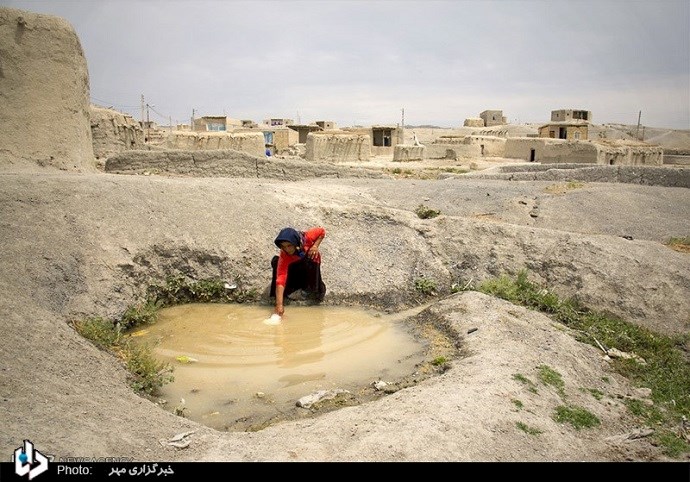
Lack of drinking water in Sistan & Baluchistan province, southeast Iran
The people and farms of Sistan & Baluchestan are in desperate need of water while local dams are filled during rainy seasons and floods threaten the people. In the summer, however, the water of these dams, like many across the country, is stolen by factories and government facilities affiliated with the Revolutionary Guards (IRGC).
“One of the one thousand stories regarding the people’s deprivation in this province is the bitter story of women and their children drowning due to the lack of water and gas; a bitter tragedy that has no end,” an article published on September 5 in the Hamdeli daily reads.
Gas shortages, like the story of water in Sistan and Baluchestan province, has a long history. This province occupies 11.4 percent of Iran’s total area has a population of 2.77 million. It is interesting that out of 47 cities and over 10,000 villages in this province, only five cities and seven villages have gas. This portrays discrimination and inequality.
As a result, women in Sistan and Baluchestan still either must carry gas cylinder on their heads or have to go to the mountains to find firewood. Some even lose their lives in the process. Women and girls either have to carry heavy containers of water for hours, face being flooded while washing clothes and dishes, or being attacked by marsh crocodiles.
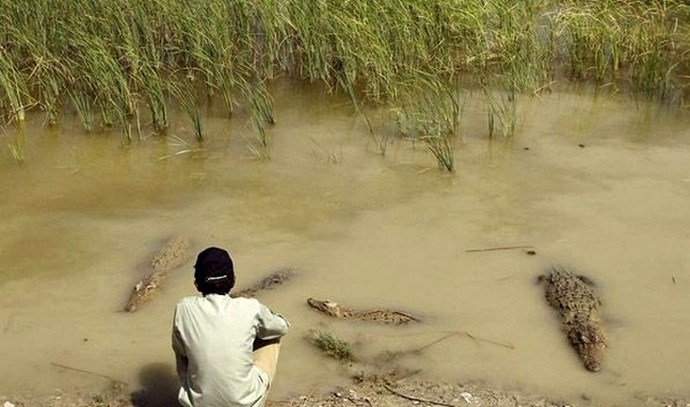
Marsh crocodiles threaten people in Sistan & Baluchistan province, southeast Iran

Gas cylinders carried by women in Sistan & Baluchistan province, southeast Iran
“Since 2018 alone, reports of the deaths of at least 18 people in seasonal ponds, mostly women and children, has been reported in the media,” according to a Hamdeli daily report published on September 5.
Many schools in this area are in tents and do not have minimum facilities for children to be able to study easily.
Education problems have doubled for them during the coronavirus crisis because it is dangerous for them to attend class. This is while none of them have a smartphone and in some areas there is no internet connection for online classes.
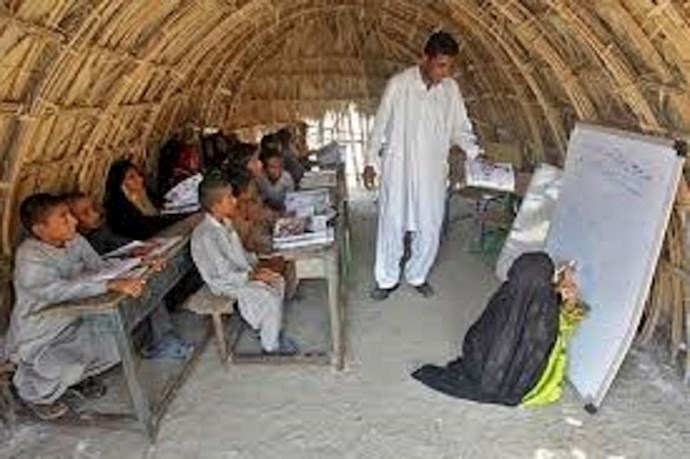
Children study in capers and tents in Sistan & Baluchistan province, southeast Iran

Children study in capers and tents in Sistan & Baluchistan province, southeast Iran

Children study in capers and tents in Sistan & Baluchistan province, southeast Iran

Children study in capers and tents in Sistan & Baluchistan province, southeast Iran
“400,000 students in this province do not have access to online education,” said Hamidreza Derakhshani, Director General of Education in this province on September 7, according to the state-run Iran daily.
“We traveled to the city of Iranshahr, the second largest city in southeast Iran, and visited its villages. Unfortunately, the people of this area are deprived of facilities, such as showers and toilets. There were no suitable electricity facilities in the villages,” said Ali Khezrian, a member of the regime’s Majlis (parliament) on September 5, according to the official ICANA news agency.
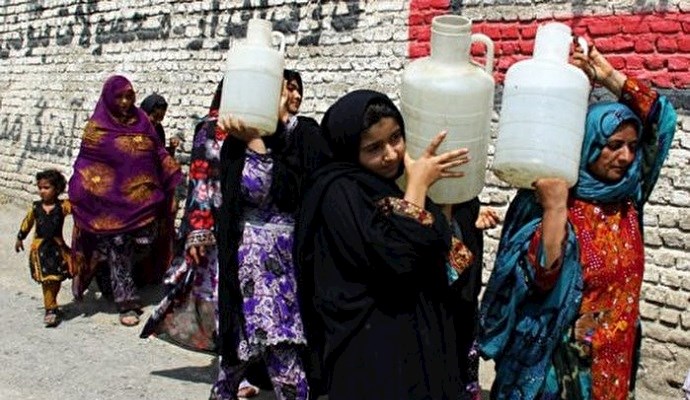
Women have to carry water for their houses in Sistan & Baluchistan province, southeast Iran
Sixty percent of the people in Sistan & Baluchestan can’t afford to buy masks, according to a report wired by the Tasnim news agency on September 1. This outlet is linked to the IRGC Quds Force.
Assuming this statistic is correct, it is not clear that how many masks the 40 percent of people who can afford can actually buy. And secondly, how long will they be able to continue purchasing masks.
Conclusion
There is no reason for the people of Sistan & Baluchestan to live in these difficult circumstances, other than that the regime’s leaders have looted their share of Iran’s wealth.
Government officials live in luxurious palaces, villas and apartments in the best areas of Tehran and other cities. They have built their glamorous buildings at the cost of destroying the lives of hundreds of thousands of people of Sistan & Baluchestan province.
The billion-dollar fortunes of the regime's leaders inside and outside the country, especially Khamenei's $200 billion property, have been stolen from these people at the price of their food, water, and other livelihood and recreational facilities.
But surely one day, the anger of the people will bring down the mullahs’ oppression and exploitation, and overthrow the mullahs’ regime.


